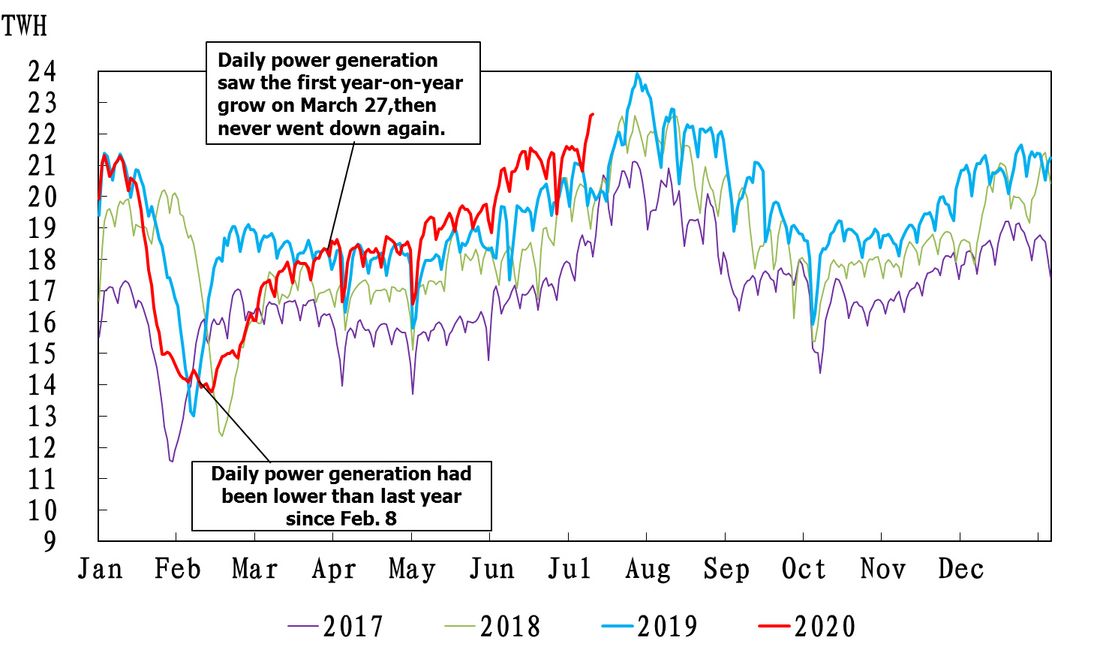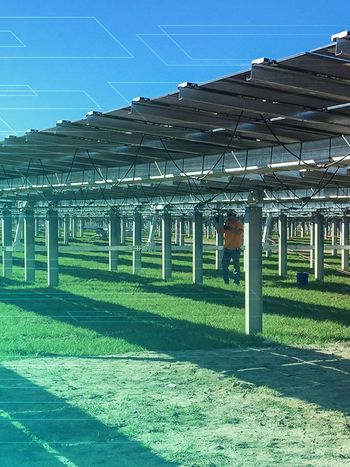Knowledge Sharing: State Grid's effective response to Covid-19 pandemic
The year 2020 is unusual in which the covid-19 is still spreading around the world. The epidemic has curbed the economic and social development, and infected tens of millions of people around the world.

State Grid Corporation of China (SGCC)
In the early stage of the covid-19, the Chinese government took timely and decisive measures, and made tremendous efforts to combat this pandemic. Under the unified decision and deployment of the Chinese government, all parts of the country have been actively engaged. So far, the nation has achieved great victories as the domestic epidemic has been basically under control and the economic activities are rebounding.
The power industry, as the fundamental industry supporting the development of the nation’s economy, was obviously affected. In the following, some of SGCC's prevention and control measures will be introduced to showcase how the company managed to ensure its employees’ safety, guarantee the stable operation of power grid and secure normal activities of power production.
Organization and deployment
According to the overall decision-making and deployment of Chinese government, SGCC took epidemic prevention as the most important work. In January this year, a leading group for epidemic prevention was established with Chairman Mao Weiming as the team leader. During the peak of the outbreak period, the leading group held daily meetings to coordinate the company's various works for epidemic prevention to secure the power supply. The subordinate units of SGCC accordingly formulated work plans and established a sound organizational system with clear responsibilities, standardized behaviors, and effective operations.
Prevention and control measures
Strengthen epidemic prevention in various places of the company
The company visitors were strictly controlled and limited. For example, the visitors must wear masks and conduct physical temperature tests before entering the company building. The company strictly implemented prevention measures such as disinfection and ventilation. In addition, dining in splitting teams was implemented to avoid people gathering.
Strengthen monitoring and control of employees’ health and safety
All employees and their families were conducted health tests, and for those who were returning from other places would been forced a 14-day quarantine. The management of meetings, trainings and business trips were strictly controlled so that the concentration and flow of personnel was minimized. Some roles were implemented A-B shifts to reduce the number of employees in the working place. According to the plan for implementing minimum personnel for the urgently needed business, only necessary employees in indispensable roles were admitted to work at the company, and the rest of employees should work from home.
Secure the supply of epidemic prevention materials
SGCC ensured masks, protective clothing, and other epidemic prevention materials for its employees by sourcing online and offline shops. By now, more than 80 million masks have been raised to provide the daily protection needs for employees.
Implement a daily reporting system
The communication mechanism of all units of the company was improved, and the daily reporting system was fully implemented. The emergency duty was strengthened. For instance, the major emergencies should be reported immediately orally and then conducted in writing reports in one hour.
Accelerate the build-up of remote working environment
SGCC implemented the allocation of software and hardware resources required for employees' remote work and improved the company's cloud platform and data center set up.
Highlight key points and make every effort to ensure power supply security
Strengthen the grid operation control
The covid-19 outbreak further damaged the already low demand during Chinese New Year. China’s power networks had experienced a “U-curve” where power consumption and load dropped dramatically before the occurrence of a slow recovery. Since February 8, 2020, daily power generation had been lower than that during the same period last year. During the mid-stage of the outbreak (mainly from late February to early March), the grid load in China saw a year-on-year decrease of 9%. Due to the orderly work resumption, national power demands were again on the rise, which reflected a gradual recovery of the economy. Working-day daily power generation nationwide and daily power dispatched by State Grid both saw the first year-on-year grow, up 0.58% and 0.19%, respectively, on March 27, 2020.

Figure 1 - Daily electricity generation in China
In order to cope with the pandemic, the dispatching system at all levels quickly adjusted the production and operation mode, such as making analysis on power balance, properly arranging the start of generation units and optimizing grid operation mode on a rolling basis to make every effort to ensure the safe operation of the power grid.

Figure 2 - Dispatchers were making analysis on power balance
Strengthen the management of dispatch duty
SGCC tried its best to prevent and control the epidemic impact to safeguard the dispatchers in safe and healthy condition. Dispatchers at all levels conducted a 50-50 split teamwork approach, which meant that all dispatchers were divided into two groups, completely separating at work, accommodation, and dining places in order to maintain social distances. Each group of personnel was assigned a car driving between isolated living places and office. All regulatory agencies should strictly implement the quarantine approach for dispatchers and dispatching rooms and prohibit non-on-duty personnel from entering the control centers. Employees who had left the dispatching and operation roles in the past two years were selected to form a reserve team on duty to ensure that the dispatchers were replenished in a timely manner.
Ensure the power supply to key customers
SGCC focused on the power supply security for hospitals, governments, water and gas supply companies, information and communication companies, news agencies, etc. The transmission lines and power equipment that supply electricity to the above key customers were taken extra care to ensure that they are in good condition. In Wuhan, Hubei province and other areas severely impacted by the Covid-19, SGCC completed the construction of supporting power projects for 69 key customers, including the epidemic prevention command headquarters and the mobile cabin hospitals. 88 new transformers and 22 ring network cabinets were constructed and put into operation. Beyond that, cables and distribution lines were laid, the length of which were nearly 60 kilometers. The cumulative investment exceeded 100 million yuan.

Figure 3 - SGCC ensured the power supply to key customers
Provide reliable power supply services for residents
SGCC made full use of the "online State Grid" mobile APP and telephone service hotline functions, and fully implemented online service. Some special measures were taken, such as providing continuous electricity for residential customers who owed fees and offering remote emergency power protection with smart meters. The remote collection application was strengthened so that our employees avoided going to copy the user's electricity on site.
Make every effort in supporting work resumption and industrial production
Under the scientific prevention and control of the pandemic, SGCC fully performed the resumption of work and daily production. On March 12, 2020, except in Hubei province, all under-construction projects, including 3205 transmission and transformation projects, and 33 pumped storage projects, had resumed. On the other side, SGCC assisted all types of industrial and commercial customers to get back to normal work. by reducing the tariff from February to June. The reduced or exempted electricity expenses will be about 48.9 billion yuan, which will benefit more than 42 million power customers and effectively alleviate the operating pressure of the enterprises.
At present, SGCC is still cautiously strengthening the prevention and control at the heart of companies’ strategy. The company is willing to continue to share anti-epidemic experience with colleagues from all over the world and finally work together to overcome covid-19 epidemic.




